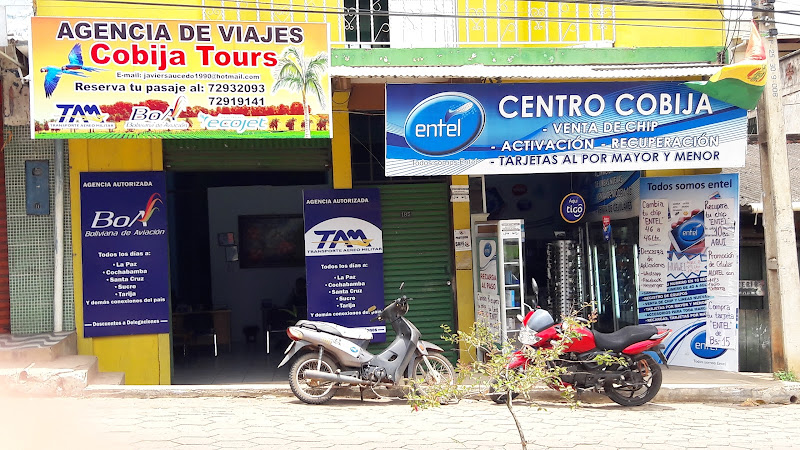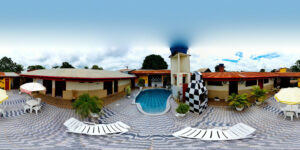
About Cobija Tours
Description
Let me tell ya about one of Bolivia’s hidden gems – Cobija Tours. I discovered this travel agency during my backpacking trip through South America last year, and boy, was I impressed! They’ve got this amazing knack for showing travelers the authentic side of Cobija that most tourists never get to see. The team there seriously knows their stuff when it comes to crafting personalized adventures in this fascinating border town.
Key Features
• Custom-tailored itineraries that showcase both popular attractions and off-the-beaten-path experiences
• Bilingual guides who actually grew up in the area and share fascinating local stories
• Specialized eco-tours into the surrounding Amazon rainforest (I still remember the sounds of those howler monkeys!)
• Cultural immersion experiences with indigenous communities
• River excursions along the Acre River
• Shopping tours to Brazil (the deals are incredible, trust me)
• Transportation services with modern, air-conditioned vehicles
• Flexible booking options for both solo travelers and groups
• Photography tours during golden hour (perfect for social media enthusiasts)
• Local culinary experiences including traditional Bolivian cooking classes
Best Time to Visit
Having experienced Cobija in different seasons, I’d say the sweet spot for booking tours is between May and October during the dry season. The weather’s more predictable then, and you’ll have clearer skies for those awesome rainforest treks. But here’s a pro tip – if you’re cool with occasional rain showers, visiting during the shoulder season (April or November) means fewer tourists and better rates. Just avoid December through March unless you’re specifically after that authentic rainy season experience – it can get pretty intense!
How to Get There
Getting to Cobija Tours isn’t as tricky as you might think. The easiest route is flying into Jorge Henrique Manitopo Airport in Cobija. There are regular flights from La Paz, and the agency can arrange airport pickup (definitely worth it – saves you the hassle of haggling with local taxis). If you’re feeling adventurous like I was, you can also take the scenic route by bus from La Paz or Santa Cruz, but be prepared for a long journey. The office is pretty central in Cobija, and any local can point you in the right direction.
Tips for Visiting
Alright, here’s where I spill all my hard-learned secrets! First off, book your tours at least a few days in advance – the good ones fill up fast, especially during peak season. Make sure to carry cash in both Bolivian bolivianos and Brazilian reais since you’ll probably hop across the border. Don’t forget to pack a good insect repellent (learned that one the hard way!) and lightweight, quick-dry clothing for those jungle excursions.
Pack some basic Portuguese phrases along with your Spanish – it’ll come in handy during cross-border tours. Oh, and bring a good camera with extra batteries – the photo opportunities are incredible, especially during those sunset river tours. Trust me on this one – opt for their early morning tours when the wildlife is most active. And don’t be shy about asking your guide to modify the pace or make stops – they’re super accommodating and want you to have the best experience possible.
Keep some flexibility in your schedule because weather can be unpredictable in this region. Also, their cultural tours often end up running longer than planned because there’s just so much to see and learn (and that’s a good thing!). If you’re planning on doing multiple tours, ask about their package deals – they usually offer pretty sweet discounts for booking several experiences together.
One last thing – make sure to try the local açaí during your tour breaks. It’s nothing like what you get back home, and your guides know exactly where to find the best spots. And remember to bring a reusable water bottle – they’re big on sustainability and provide filtered water refills during tours.
Description
Let me tell ya about one of Bolivia’s hidden gems – Cobija Tours. I discovered this travel agency during my backpacking trip through South America last year, and boy, was I impressed! They’ve got this amazing knack for showing travelers the authentic side of Cobija that most tourists never get to see. The team there seriously knows their stuff when it comes to crafting personalized adventures in this fascinating border town.
Key Features
• Custom-tailored itineraries that showcase both popular attractions and off-the-beaten-path experiences
• Bilingual guides who actually grew up in the area and share fascinating local stories
• Specialized eco-tours into the surrounding Amazon rainforest (I still remember the sounds of those howler monkeys!)
• Cultural immersion experiences with indigenous communities
• River excursions along the Acre River
• Shopping tours to Brazil (the deals are incredible, trust me)
• Transportation services with modern, air-conditioned vehicles
• Flexible booking options for both solo travelers and groups
• Photography tours during golden hour (perfect for social media enthusiasts)
• Local culinary experiences including traditional Bolivian cooking classes
Best Time to Visit
Having experienced Cobija in different seasons, I’d say the sweet spot for booking tours is between May and October during the dry season. The weather’s more predictable then, and you’ll have clearer skies for those awesome rainforest treks. But here’s a pro tip – if you’re cool with occasional rain showers, visiting during the shoulder season (April or November) means fewer tourists and better rates. Just avoid December through March unless you’re specifically after that authentic rainy season experience – it can get pretty intense!
How to Get There
Getting to Cobija Tours isn’t as tricky as you might think. The easiest route is flying into Jorge Henrique Manitopo Airport in Cobija. There are regular flights from La Paz, and the agency can arrange airport pickup (definitely worth it – saves you the hassle of haggling with local taxis). If you’re feeling adventurous like I was, you can also take the scenic route by bus from La Paz or Santa Cruz, but be prepared for a long journey. The office is pretty central in Cobija, and any local can point you in the right direction.
Tips for Visiting
Alright, here’s where I spill all my hard-learned secrets! First off, book your tours at least a few days in advance – the good ones fill up fast, especially during peak season. Make sure to carry cash in both Bolivian bolivianos and Brazilian reais since you’ll probably hop across the border. Don’t forget to pack a good insect repellent (learned that one the hard way!) and lightweight, quick-dry clothing for those jungle excursions.
Pack some basic Portuguese phrases along with your Spanish – it’ll come in handy during cross-border tours. Oh, and bring a good camera with extra batteries – the photo opportunities are incredible, especially during those sunset river tours. Trust me on this one – opt for their early morning tours when the wildlife is most active. And don’t be shy about asking your guide to modify the pace or make stops – they’re super accommodating and want you to have the best experience possible.
Keep some flexibility in your schedule because weather can be unpredictable in this region. Also, their cultural tours often end up running longer than planned because there’s just so much to see and learn (and that’s a good thing!). If you’re planning on doing multiple tours, ask about their package deals – they usually offer pretty sweet discounts for booking several experiences together.
One last thing – make sure to try the local açaí during your tour breaks. It’s nothing like what you get back home, and your guides know exactly where to find the best spots. And remember to bring a reusable water bottle – they’re big on sustainability and provide filtered water refills during tours.
Location
Places to Stay Near Cobija Tours
Find Tours in Cobija
Explore More Travel Guides
No reviews found! Be the first to review!


